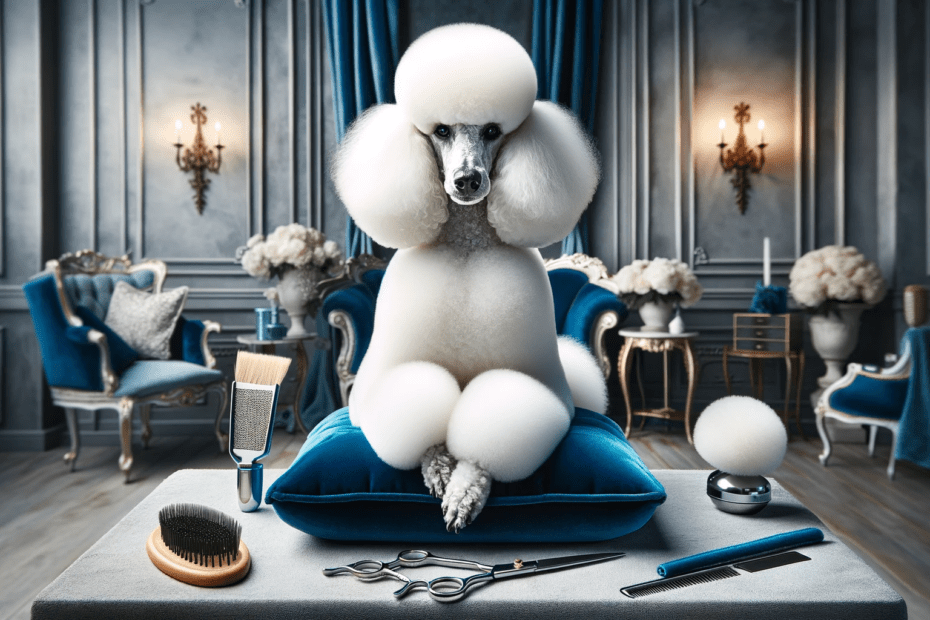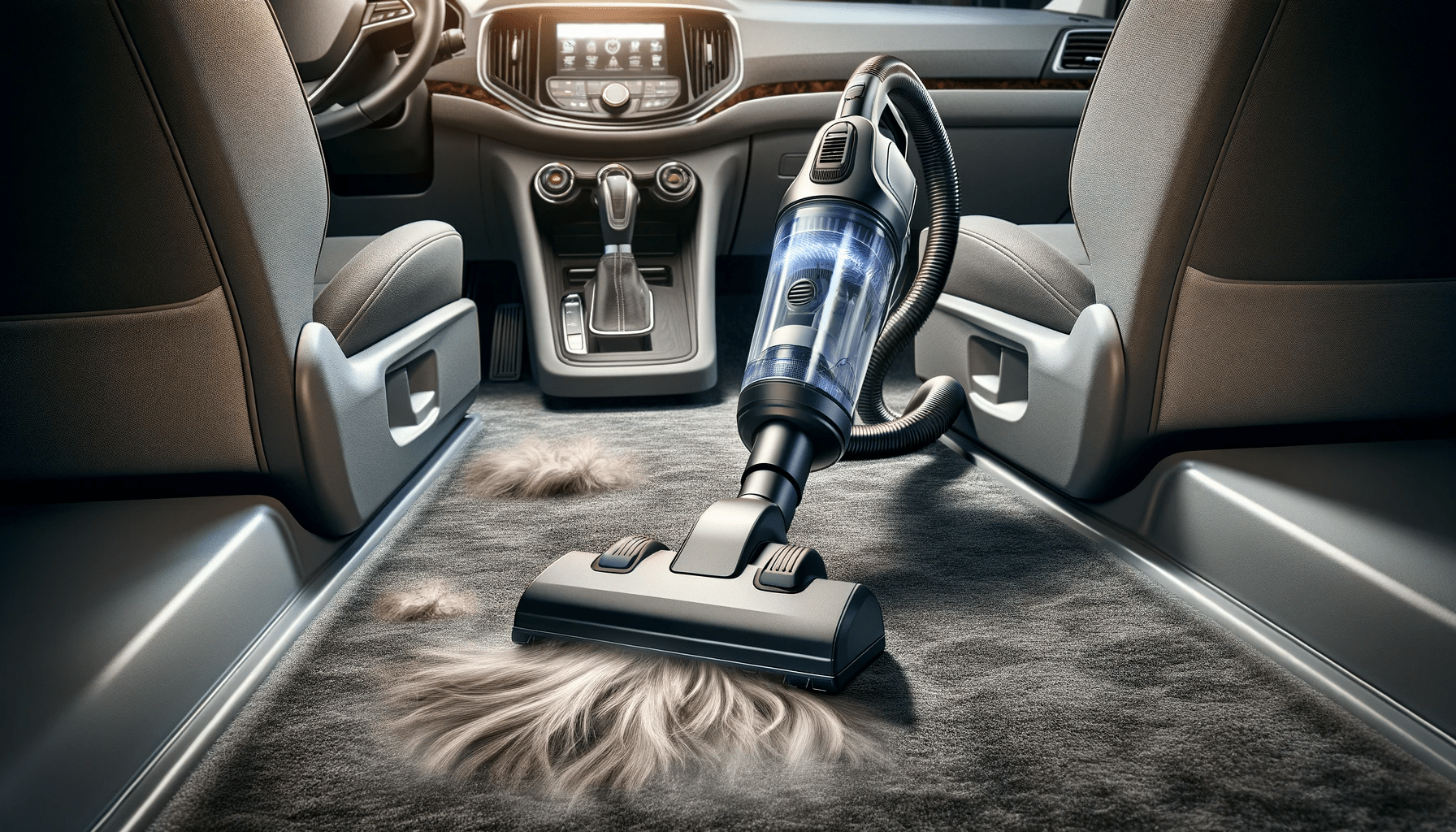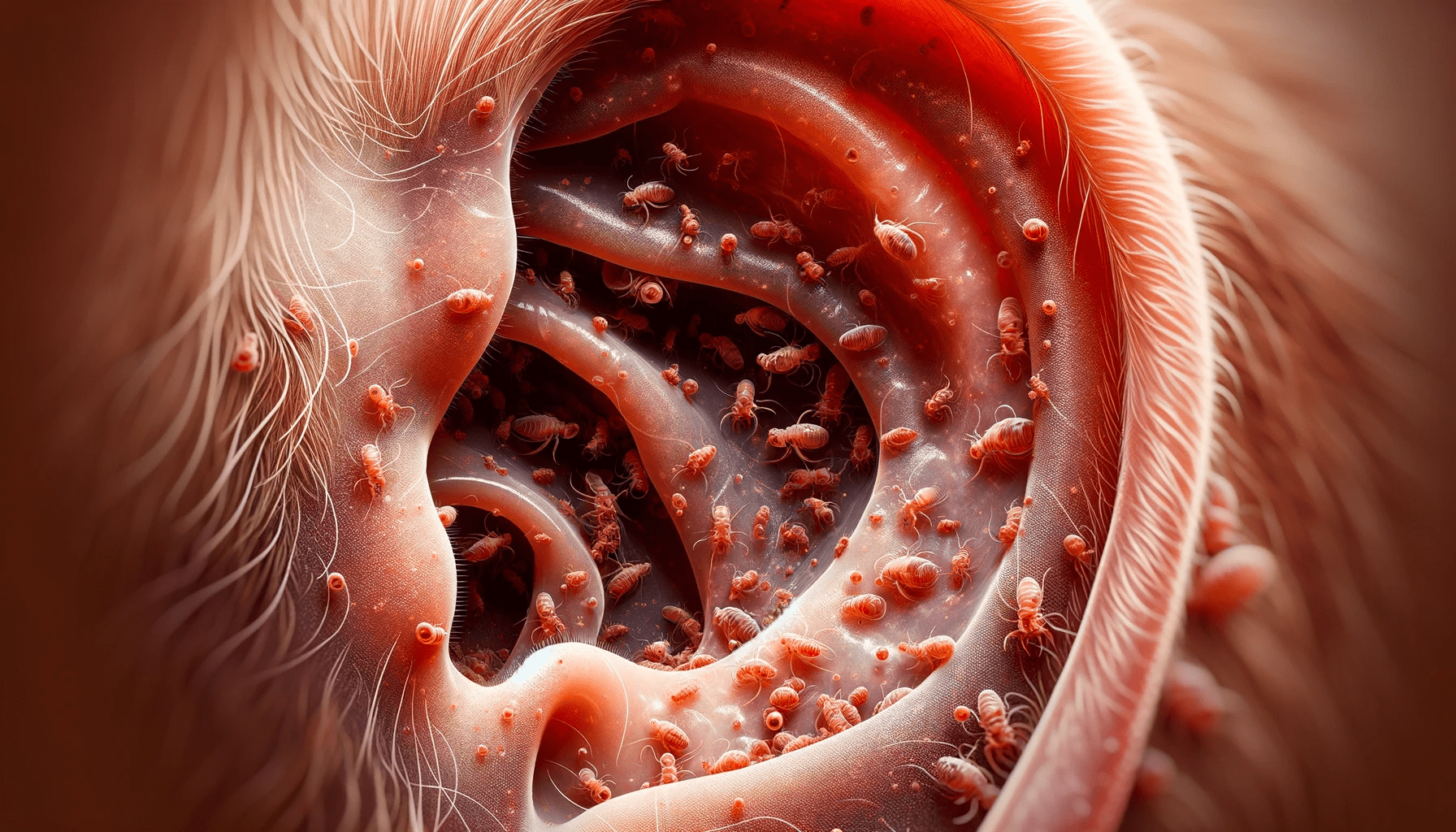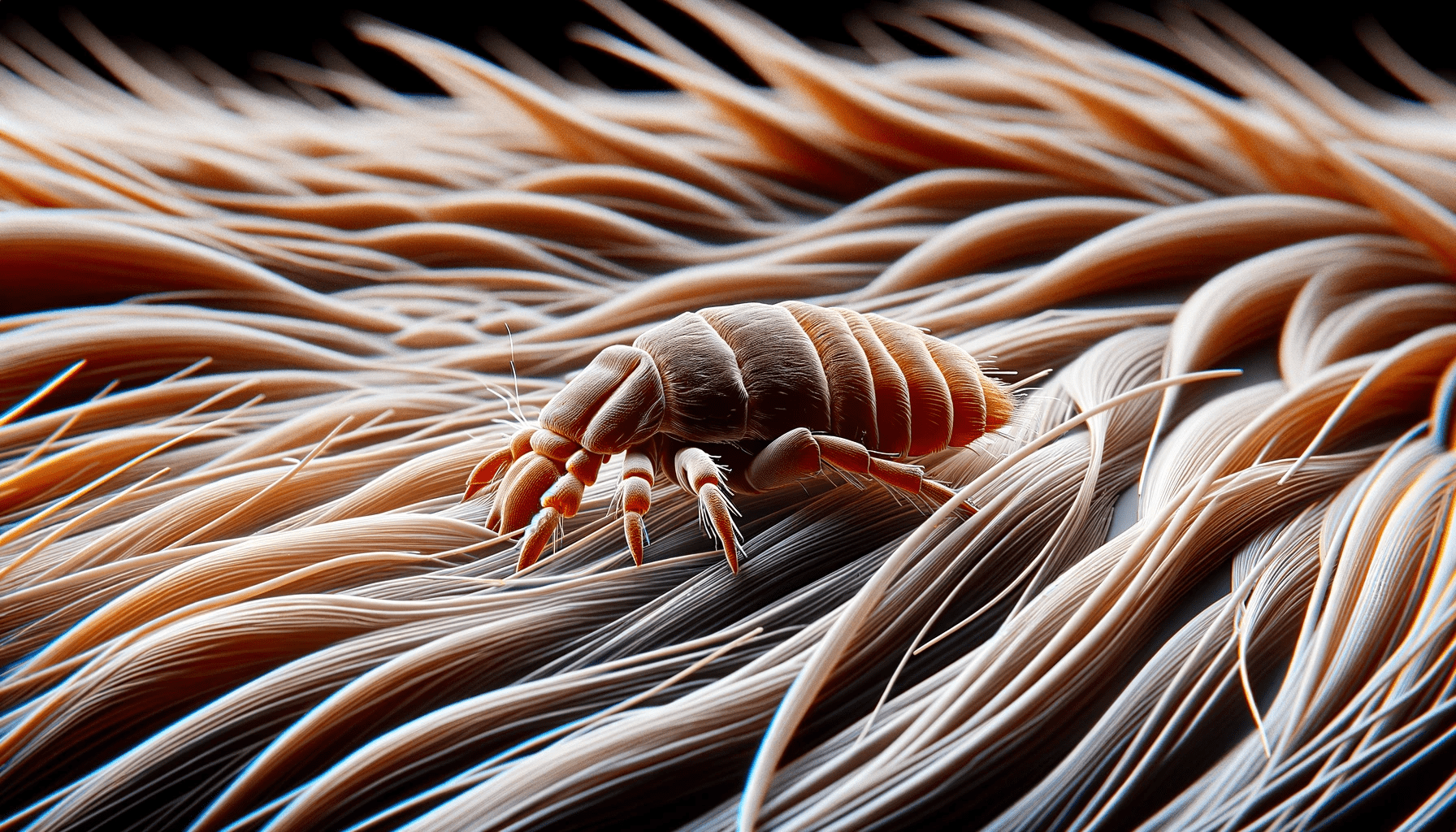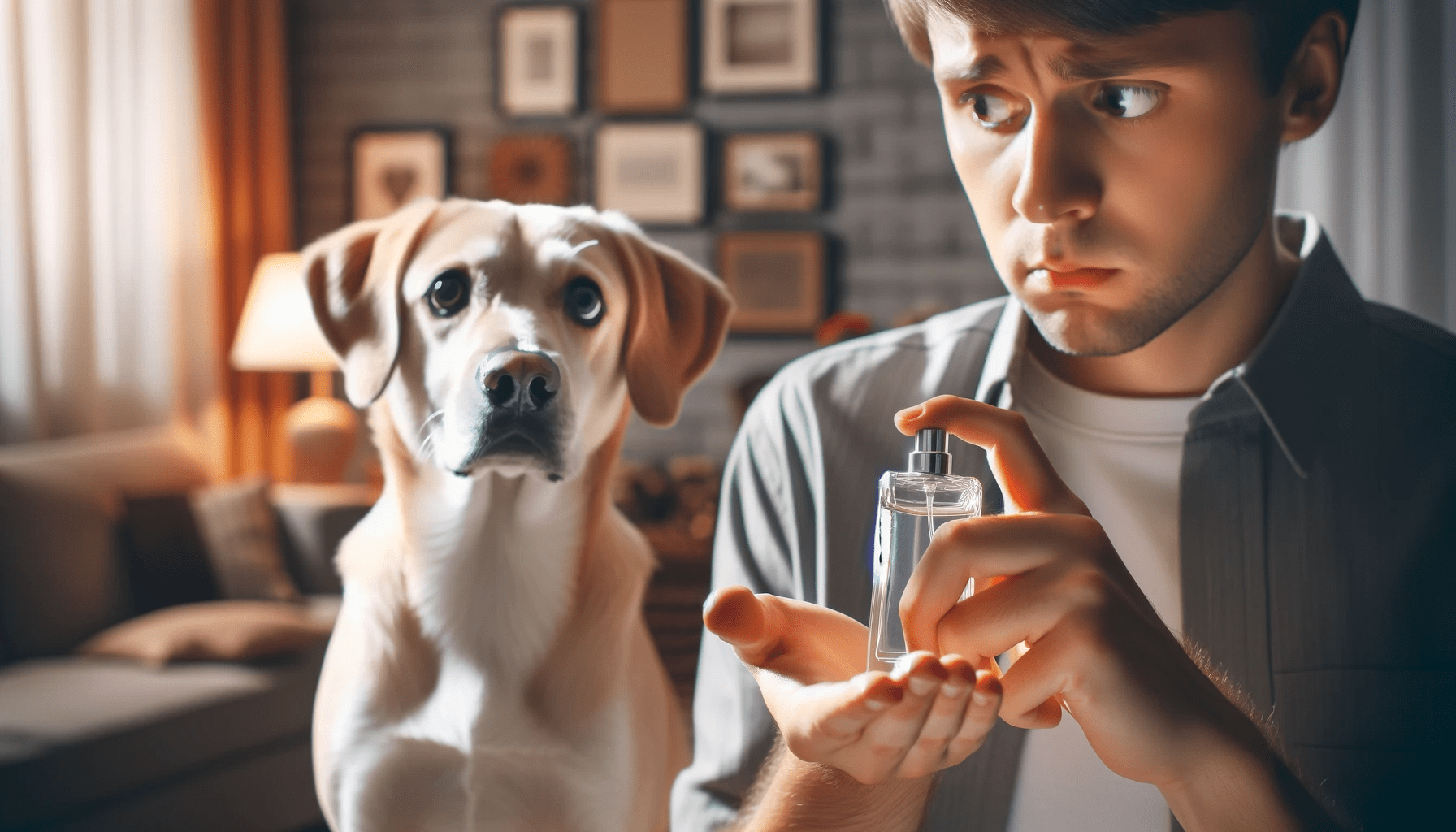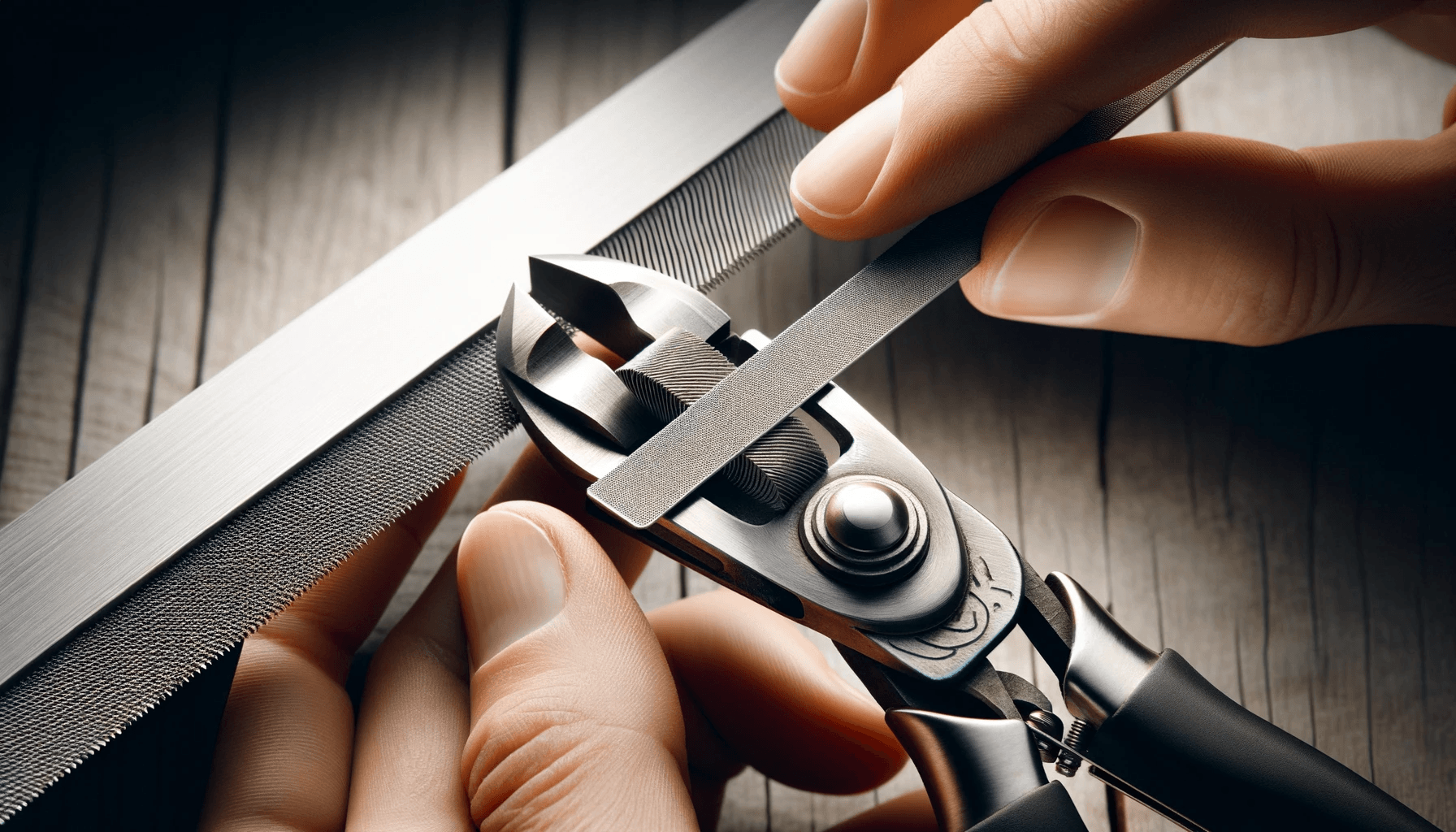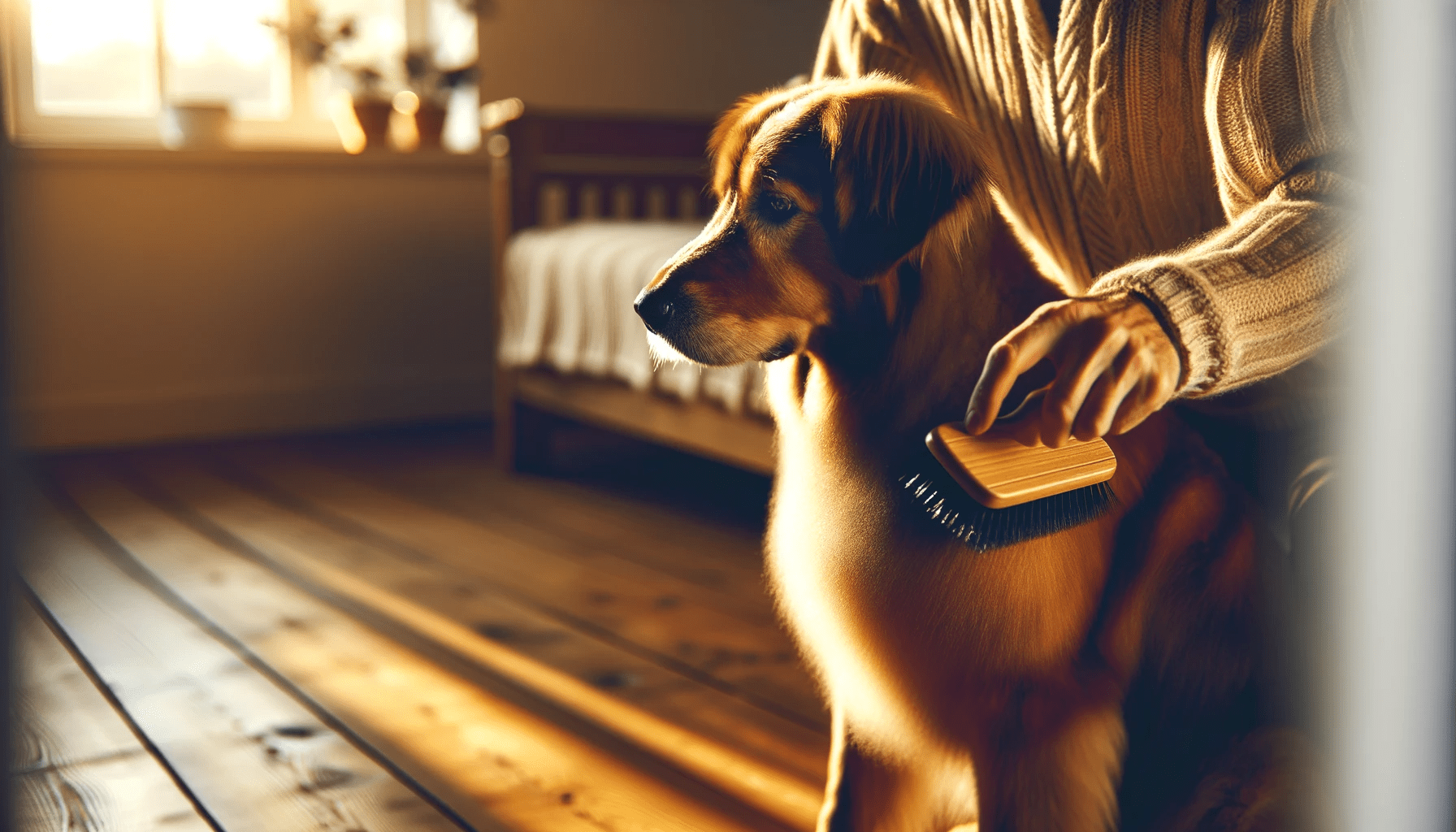Are you ready to discover the ultimate secrets to grooming your dog like a pro? Look no further!
In this article, we'll reveal the tips and tricks that will leave your furry friend looking and feeling their best.
From choosing the right shampoo and conditioner to mastering the art of brushing and combing, we've got you covered.
Get ready to unleash the ultimate dog grooming secrets and become the envy of all dog owners!
Key Takeaways
- Different coat types require specific grooming tools
- Specialty products for sensitive skin are important for dogs with sensitive skin
- Flea prevention is an important aspect of dog grooming
- Regular grooming helps maintain a healthy and shiny coat
Shampoo and Conditioner
To achieve a clean and shiny coat for your furry friend, start by carefully selecting a high-quality shampoo and conditioner. When choosing the right shampoo and conditioner for your dog, it's important to consider their specific needs. Different breeds and coat types require different formulations, so make sure to read the labels and choose products that are suitable for your dog's coat. Look for shampoos and conditioners that are gentle, pH-balanced, and free from harsh chemicals that could irritate your dog's skin.
Once you have the right shampoo and conditioner, the next step is proper rinsing. This step is often overlooked, but it plays a crucial role in achieving a healthy and lustrous coat. After thoroughly lathering your dog's coat with shampoo, make sure to rinse it thoroughly as well. Leftover shampoo residue can cause skin irritation and dullness in the coat. Rinse your dog's coat until the water runs clear, ensuring that there's no trace of shampoo left behind.
Brushing and Comb
When it comes to brushing and combing your dog, selecting the right tools is crucial. Look for brushes and combs that are specifically designed for your dog's coat type.
Brushing should be done regularly, depending on your dog's breed and coat length, to keep their fur healthy and tangle-free. Not only does regular brushing help remove loose hair and prevent matting, but it also stimulates the skin and distributes natural oils for a shiny coat.
Tool Selection Tips
Choose the right brushes and combs to keep your dog's coat clean and well-groomed. Dog grooming tools play a crucial role in maintaining a clean coat and preventing tangles and matting. When selecting brushes, consider your dog's coat type.
For short-haired dogs, a bristle brush or rubber curry brush works well to remove loose hair and dirt.
Long-haired dogs may require a slicker brush to remove tangles and a pin brush for daily maintenance.
Combs are essential for detangling and removing debris from the coat. Wide-toothed combs are ideal for thick, curly coats, while fine-toothed combs work best for long, silky hair.
Remember to choose tools that are appropriate for your dog's size and coat texture to achieve the best grooming results.
Frequency and Benefits
You should brush and comb your dog regularly to maintain a healthy coat and provide numerous benefits. Regular grooming not only keeps your dog's fur looking great but also has several other advantages.
Here are three benefits of brushing and combing your dog:
- Reduces shedding: Brushing and combing help to remove loose and dead hair from your dog's coat, minimizing shedding in your home.
- Prevents matting: Regular grooming prevents tangles and matting, which can be painful for your dog and lead to skin problems.
- Promotes bonding: Brushing and combing your dog creates a special bonding time between you and your furry friend, enhancing your relationship.
As for how often you should groom your dog, it depends on the breed and coat type. Long-haired dogs may need daily brushing, while short-haired breeds can be groomed once a week. Consider seeking professional grooming services to ensure your dog receives the full benefits of a thorough grooming session.
Nail Clippers and Grinders
Now let's talk about nail clippers and grinders, two essential tools for keeping your dog's nails in check.
When it comes to choosing between clippers and grinders, it's important to consider your dog's size, temperament, and your own comfort level.
Clippers are great for trimming nails quickly, but grinders offer a smoother finish and can be less intimidating for both you and your furry friend.
Remember to follow safety tips when using either tool to avoid hurting your dog and to ensure a stress-free grooming experience.
Clipper Vs Grinder
When selecting between nail clippers and grinders for grooming your dog's nails, it's important to consider their respective advantages and drawbacks. Here are some key points to help you make an informed decision:
- Nail clippers:
- Easy to use and widely available
- Requires regular maintenance, such as sharpening or replacing blades, to ensure clean cuts
- Can cause discomfort or pain if not used correctly
- Grinders:
- Provides a smooth and gradual nail trim
- Safer option for dogs with dark or thick nails, as it reduces the risk of accidentally cutting the quick
- Regular cleaning and maintenance are necessary to prevent overheating and keep the grinder in good condition
Safety Tips for Nails
To ensure the safety of your dog's nails when using nail clippers or grinders, it's essential to follow these tips.
First and foremost, make sure you're using the right tool for your dog's nails. Clippers are suitable for small to medium-sized dogs, while grinders work well for larger dogs or dogs with thicker nails.
When trimming your dog's nails, remember to take it slow and be gentle. Avoid cutting too close to the quick, which is the sensitive part of the nail. If your dog has dark nails and you can't see the quick, trim small amounts at a time to prevent accidents.
Additionally, keep a styptic powder or cornstarch on hand in case of bleeding.
Ear and Eye Care
Take good care of your dog's ears and eyes by using a gentle cleanser specifically designed for this purpose. It's important to maintain the health and cleanliness of these sensitive areas to prevent infections and discomfort.
Here are three essential tips to help you properly care for your dog's ears and eyes:
- Ear Cleaning: Regularly clean your dog's ears to remove dirt, wax, and debris. Use a dog-friendly ear cleanser and gently wipe the inner ear with a cotton ball or a soft cloth. Avoid inserting anything into the ear canal, as it can cause damage. If you notice any redness, swelling, or a foul odor, consult your veterinarian.
- Tear Stain Removal: Tear stains can be unsightly and uncomfortable for your dog. Use a tear stain remover specifically formulated for dogs to gently remove stains around the eyes. Be cautious not to get the solution into your dog's eyes, and always follow the instructions provided by the product.
- Regular Inspection: Regularly inspect your dog's ears and eyes for any signs of irritation, discharge, or redness. If you notice any abnormalities, consult your veterinarian for a proper diagnosis and treatment.
Dental Hygiene Products
To keep your dog's teeth clean and healthy, it's essential that you incorporate dental hygiene products into their grooming routine. Just like humans, dogs can suffer from dental problems such as plaque buildup, tartar, and gum disease. Regular brushing can help prevent these issues and ensure your dog's oral health.
When it comes to toothbrush selection, there are a few options available. You can choose a traditional toothbrush with soft bristles, specially designed for dogs. These brushes usually have longer handles to make it easier to reach the back teeth. Alternatively, you can opt for finger brushes, which fit over your finger and allow for more precise brushing. Some dogs may prefer the finger brush as it feels more gentle.
As for toothpaste options, it's important to use toothpaste specifically formulated for dogs. Human toothpaste contains ingredients that can be harmful to dogs if swallowed. Dog toothpaste comes in a variety of flavors, such as chicken or beef, which can make the brushing experience more enjoyable for your furry friend.
Grooming Tools for Different Coat Types
Choose the right grooming tools based on your dog's specific coat type to achieve the best results. Different dogs have different types of coats, and using the appropriate tools can make a huge difference in the grooming process.
Here are three essential grooming tools that are specifically designed for different coat types:
- Slicker Brush: This brush is perfect for dogs with medium to long hair and helps to remove tangles and mats. The fine, short wires on the brush penetrate deep into the coat, removing loose hair and preventing matting. Regular use of a slicker brush will keep your dog's coat looking smooth and shiny.
- Shedding Blade: If your dog has a thick double coat that sheds heavily, a shedding blade is a must-have tool. This tool has a serrated edge that easily removes loose hair from the undercoat. By using a shedding blade, you can effectively reduce shedding and prevent your home from being covered in dog hair.
- Grooming Comb: A grooming comb is an essential tool for dogs with long, silky hair or curly coats. This comb has both wide and narrow teeth, making it perfect for removing tangles and mats. Regular combing not only keeps your dog's coat neat and tangle-free but also helps to distribute natural oils, promoting a healthy and shiny coat.
Specialty Products for Specific Needs
Looking to address specific grooming needs for your dog? What specialty products are available to help you achieve the best results?
When it comes to grooming dogs with sensitive skin, it's important to choose products that are gentle and soothing. Look for shampoos and conditioners specifically formulated for sensitive skin, as they're designed to minimize irritation and reduce itching. These products often contain natural ingredients like oatmeal or aloe vera, which can help to calm and moisturize the skin.
In addition to sensitive skin, flea prevention is another important aspect of dog grooming. Fleas can cause a range of issues, from itchiness and discomfort to more serious health problems. To keep your dog flea-free, consider using flea prevention products such as topical treatments or oral medications. These products are formulated to kill fleas and prevent infestations, helping to keep your dog healthy and happy.
When choosing specialty products for your dog's specific grooming needs, it's important to consult with your veterinarian. They can provide guidance on the most suitable products for your dog's unique needs and help you achieve the best results.
Frequently Asked Questions
How Often Should I Bathe My Dog and What Type of Shampoo and Conditioner Should I Use?
You should bathe your dog regularly, depending on its breed and activity level. Use a shampoo and conditioner specifically formulated for dogs, avoiding harsh chemicals. Regular grooming and brushing can help control shedding.
Are There Any Specific Brushing Techniques or Tools That Are Recommended for Dogs With Long or Curly Coats?
To keep your dog's long or curly coat looking its best, there are specific brushing techniques and recommended tools. Regularly brush your dog's coat using a slicker brush or a comb to prevent matting and keep the fur tangle-free.
What Is the Best Way to Trim My Dog's Nails and What Type of Nail Clippers or Grinders Should I Use?
To trim your dog's nails, choose nail clippers or grinders specifically designed for dog nail care. Start by getting your dog used to having their paws handled, then trim the nails gradually. Follow safety guidelines and consult a professional if needed.
How Often Should I Clean My Dog's Ears and What Are Some Recommended Products for Ear Care?
To keep your dog's ears healthy, clean them regularly. The frequency depends on your dog's breed and activity level, but generally aim for once a month. Top-rated ear cleaning products like [Product A] and [Product B] can help maintain cleanliness.
What Are Some Dental Hygiene Products That Are Safe and Effective for Maintaining My Dog's Oral Health?
To maintain your dog's oral health, use dental chews, toothpaste, and toothbrush for dogs. You can also try mouthwash, dental wipes, dental water additives, dental gels, dental sprays, dental toys, dental treats, or dental diets for dogs.
Conclusion
In conclusion, proper grooming is essential for maintaining the health and appearance of your dog. By using the right shampoo and conditioner, brushing and combing regularly, trimming nails, caring for their ears and eyes, and ensuring dental hygiene, you can keep your furry friend looking and feeling their best.
Additionally, investing in grooming tools suitable for different coat types and using specialty products for specific needs will help you achieve optimal results.
Remember, a well-groomed dog is a happy and healthy dog.
